Grow Onions Easily, even if you think you have a black thumb! Let’s face it, store-bought onions can be bland and expensive, and nothing beats the satisfaction of harvesting your own fresh, flavorful bulbs right from your backyard. For centuries, onions have been a staple in cuisines around the world, dating back to ancient Egypt where they were even revered as symbols of eternity. They’re not just delicious; they’re packed with nutrients and have been used in traditional medicine for ages.
But the thought of growing them can be intimidating, right? I get it! That’s why I’m so excited to share some incredibly simple and effective DIY tricks and hacks that will have you grow onions easily, regardless of your gardening experience. Imagine adding the perfect touch of homegrown flavor to your favorite dishes, knowing exactly where your food came from, and saving money in the process. This article is your ultimate guide to unlocking the secrets of successful onion cultivation, turning your garden into a fragrant and bountiful source of this essential ingredient. Get ready to ditch the grocery store onions and embrace the joy of homegrown goodness!
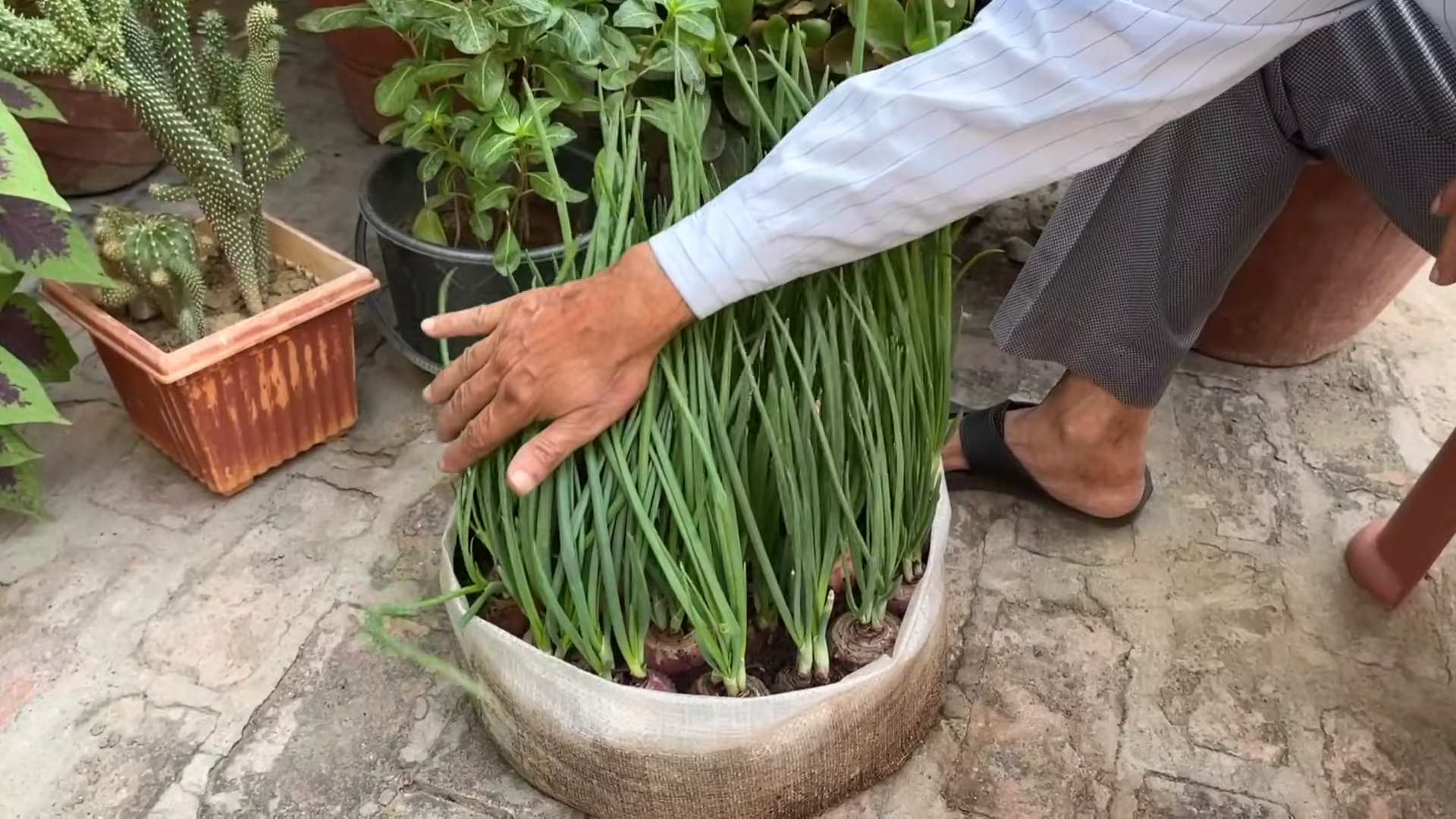
Grow Onions Easily: A Beginner’s Guide to Bountiful Bulbs!
Okay, so you want to grow onions? Awesome! It’s easier than you think, and there’s nothing quite like the taste of a homegrown onion. I’m going to walk you through everything you need to know, from choosing the right type to harvesting your delicious bulbs. Let’s get started!
Choosing Your Onion Type
First things first, you need to decide what kind of onion you want to grow. There are three main types, categorized by day length:
* Long-day onions: These need 14-16 hours of daylight to form bulbs. They’re best suited for northern climates. Think Walla Walla Sweets, Yellow Spanish, and Red Burgundy.
* Short-day onions: These need 10-12 hours of daylight. They thrive in southern climates. Examples include Granex, White Bermuda, and Crystal White Wax.
* Intermediate-day onions: These are more adaptable and can grow in a wider range of climates. Look for varieties like Candy, Super Sweet, and Red Candy Apple.
Consider your location and the amount of sunlight your garden receives when making your choice. I usually go with intermediate-day onions because they’re pretty forgiving.
Starting from Seeds, Sets, or Transplants?
You have three options for starting your onion journey: seeds, sets, or transplants. Each has its pros and cons.
* Seeds: This is the most economical option, but it requires the most time and effort. You’ll need to start your seeds indoors 8-10 weeks before the last expected frost.
* Sets: These are small, immature onion bulbs. They’re easier to handle than seeds and will give you a head start. However, they can sometimes bolt (flower) prematurely, which reduces bulb size.
* Transplants: These are young onion plants that have already been started for you. They’re the most expensive option, but they’re also the easiest and most reliable.
I personally prefer using transplants because they save me a lot of time and hassle. Plus, I’ve had good success with them.
Preparing Your Soil
Onions need well-drained, fertile soil with a pH between 6.0 and 7.0. Here’s how to get your soil ready:
1. Choose a sunny spot: Onions need at least 6-8 hours of sunlight per day.
2. Clear the area: Remove any weeds, rocks, or debris.
3. Amend the soil: Add plenty of compost or well-rotted manure to improve drainage and fertility. I usually add a few inches of compost and work it into the top 6-8 inches of soil.
4. Test the pH: Use a soil testing kit to check the pH. If it’s too acidic, add lime. If it’s too alkaline, add sulfur.
5. Create raised beds (optional): Raised beds can improve drainage, especially in areas with heavy clay soil.
Planting Your Onions
Now for the fun part – planting! Here’s how to do it, depending on whether you’re using sets or transplants:
Planting Onion Sets
1. Prepare the soil: Make sure the soil is loose and well-drained.
2. Create furrows: Dig shallow furrows about 1 inch deep and 4-6 inches apart.
3. Plant the sets: Place the sets in the furrows, about 2-3 inches apart. Make sure the pointy end is facing up.
4. Cover the sets: Gently cover the sets with soil, leaving the very tip exposed.
5. Water thoroughly: Water the area well to settle the soil.
Planting Onion Transplants
1. Prepare the soil: Make sure the soil is loose and well-drained.
2. Dig holes: Dig holes about 1 inch deep and 4-6 inches apart.
3. Remove the transplants from their containers: Gently loosen the roots before planting.
4. Plant the transplants: Place the transplants in the holes, making sure the top of the root ball is level with the soil surface.
5. Backfill the holes: Gently backfill the holes with soil and firm the soil around the plants.
6. Water thoroughly: Water the area well to settle the soil.
Caring for Your Onions
Onions need consistent care to thrive. Here’s what you need to do:
1. Water regularly: Onions need about 1 inch of water per week. Water deeply and evenly, especially during dry periods. I usually water in the morning to allow the foliage to dry before nightfall, which helps prevent fungal diseases.
2. Weed diligently: Weeds can compete with onions for nutrients and water. Remove weeds regularly by hand or with a hoe.
3. Fertilize: Onions are heavy feeders. Fertilize them every 2-3 weeks with a balanced fertilizer. I like to use a fertilizer that’s high in nitrogen during the early stages of growth, and then switch to a fertilizer that’s higher in phosphorus and potassium as the bulbs start to form.
4. Mulch: Apply a layer of mulch around the onions to help retain moisture, suppress weeds, and regulate soil temperature. Straw, hay, or wood chips work well.
5. Pest and disease control: Keep an eye out for pests and diseases. Common onion pests include onion maggots, thrips, and aphids. Common diseases include onion blight, downy mildew, and white rot. If you spot any problems, take action immediately. You can use organic pesticides or fungicides if necessary. I prefer to use neem oil for pest control.
Harvesting Your Onions
The moment you’ve been waiting for! Here’s how to harvest your onions:
1. When to harvest: Onions are typically ready to harvest when the tops start to fall over and turn yellow or brown. This usually happens in late summer or early fall.
2. Loosen the soil: Use a garden fork to gently loosen the soil around the onions.
3. Pull the onions: Gently pull the onions from the ground.
4. Cure the onions: Cure the onions in a warm, dry, well-ventilated place for 2-3 weeks. This will help them to dry out and develop a protective outer layer. I usually spread them out on a screen or in a well-ventilated shed.
5. Store the onions: Once the onions are cured, store them in a cool, dry, dark place. Braiding the tops together and hanging them up is a traditional method of storage. You can also store them in mesh bags or crates.
Troubleshooting Common Problems
Even with the best care, you might encounter some problems along the way. Here are a few common issues and how to deal with them:
* Bolting (flowering): This can happen if the onions experience a period of cold weather or stress. Remove the flower stalk as soon as you see it to prevent the plant from putting its energy into producing seeds instead of bulbs.
* Small bulbs: This can be caused by a number of factors, including poor soil, lack of water, or overcrowding. Make sure your soil is fertile, water regularly, and thin out your onions if they’re too close together.
* Pest infestations: Keep an eye out for pests and take action immediately if you spot any problems. Use organic pesticides or insecticides if necessary.
* Disease problems: Prevent disease problems by providing good air circulation, avoiding overhead watering, and using disease-resistant varieties.
Extra Tips for Onion Success
Here are a few extra tips to help you grow the best onions possible:
* Rotate your crops: Don’t plant onions in the same spot year after year. Rotate them with other crops to prevent soilborne diseases.
* Plant companion plants: Plant companion plants like carrots, chamomile, and marigolds to help deter pests and attract beneficial insects.
* Use row covers: Row covers can protect your onions from pests and diseases, especially during the early stages of growth.
* Keep a garden journal: Keep track of your planting dates, fertilizer applications, and any problems you encounter. This will help you to learn from your mistakes and improve your onion-growing skills over time.
Enjoy Your Homegrown Onions!
Growing your own onions is a rewarding experience. With a little bit of effort, you can enjoy a bountiful harvest of delicious, homegrown onions. So get out there and start planting! You’ll be amazed at how easy and satisfying it is. Happy gardening!
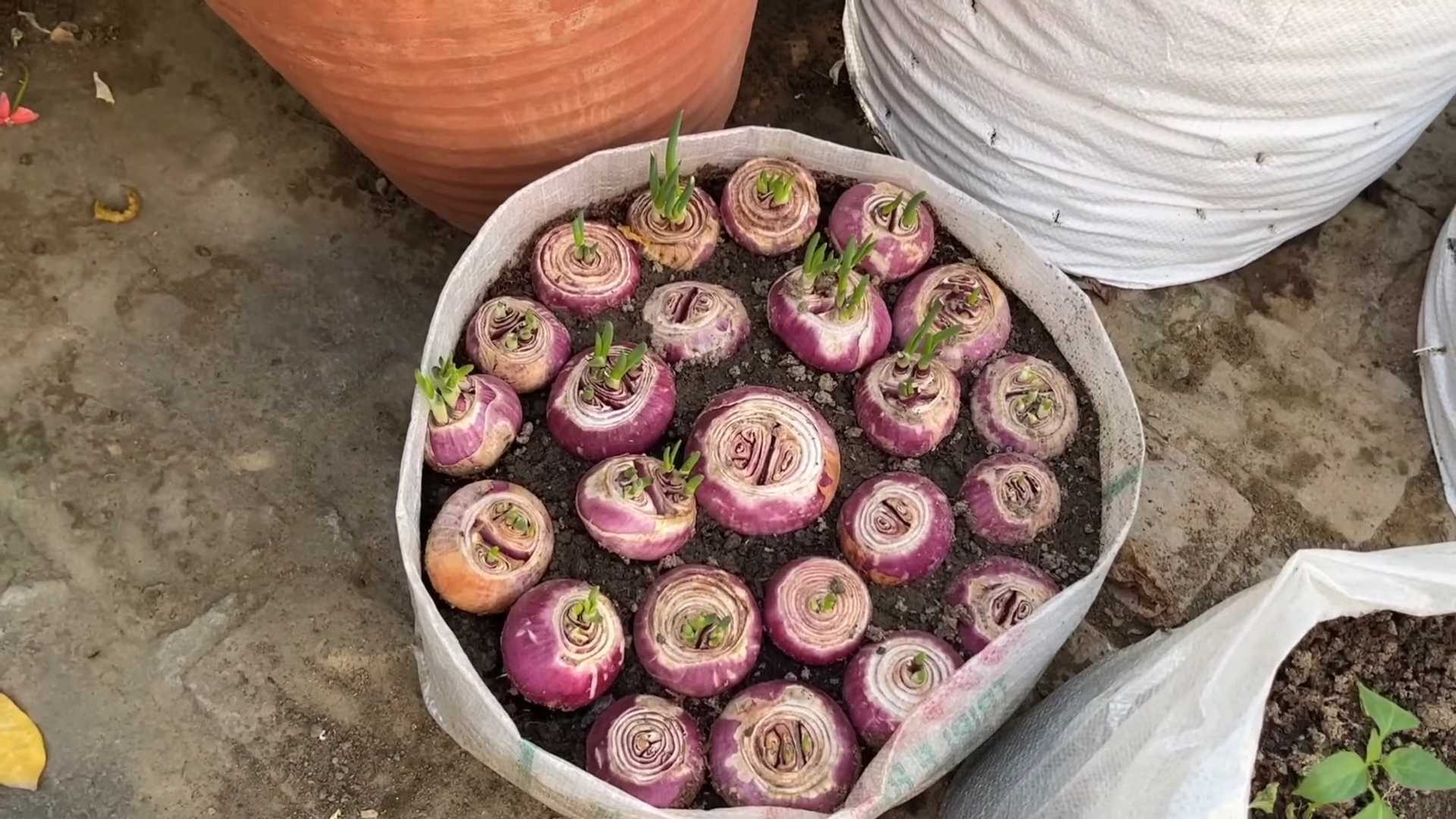
Conclusion
So, there you have it! Growing onions easily at home is not only achievable but also incredibly rewarding. Forget those bland, store-bought onions that lack that certain zing. Imagine the satisfaction of harvesting plump, flavorful onions that you nurtured from tiny sets or even seeds. This simple DIY trick, using readily available materials and minimal effort, unlocks a world of culinary possibilities and gardening joy.
Why is this a must-try? Because it empowers you to control the quality of your produce, reduce your grocery bills, and connect with nature in a tangible way. You’ll know exactly what went into your onions – no pesticides, no questionable fertilizers, just good old-fashioned care and attention. Plus, the taste difference is undeniable. Homegrown onions boast a freshness and intensity that you simply can’t find in commercially grown varieties.
But the beauty of this method lies in its adaptability. Feel free to experiment with different onion varieties. Try growing red onions for vibrant salads, yellow onions for versatile cooking, or sweet onions for caramelized perfection. You can also adjust the planting density based on your available space and desired onion size. For smaller onions, plant them closer together; for larger ones, give them more room to breathe.
Consider companion planting to further enhance your onion’s growth and deter pests. Carrots, for example, are excellent companions as they repel onion flies, while onions, in turn, deter carrot root flies. Marigolds are another great addition, adding a splash of color and helping to keep nematodes at bay.
Don’t be afraid to get your hands dirty and embrace the learning process. Gardening is all about experimentation and discovery. You might encounter challenges along the way, but that’s part of the fun. And remember, even if your first attempt isn’t perfect, you’ll learn valuable lessons that will help you succeed next time.
We wholeheartedly encourage you to try this DIY trick for growing onions easily. It’s a simple, cost-effective, and incredibly satisfying way to elevate your cooking and connect with the natural world. Once you’ve experienced the joy of harvesting your own homegrown onions, you’ll never look at store-bought onions the same way again.
So, grab your onion sets or seeds, prepare your soil, and get ready to embark on a rewarding gardening adventure. And most importantly, don’t forget to share your experiences with us! We’d love to hear about your successes, your challenges, and any variations you’ve tried. Share your photos, tips, and stories in the comments below. Let’s build a community of passionate home gardeners who are dedicated to growing delicious, healthy food. Happy gardening!
Frequently Asked Questions (FAQ)
What is the best time of year to plant onions?
The ideal time to plant onions depends on your climate and the type of onion you’re growing. In general, you can plant onion sets (small, immature onions) in early spring, as soon as the ground can be worked. For seed-grown onions, start them indoors 8-10 weeks before the last expected frost. In warmer climates, you can plant onion sets in the fall for a winter harvest. The key is to ensure that the onions have enough time to mature before the weather gets too hot or too cold. Check your local gardening resources for specific planting dates in your area.
What kind of soil is best for growing onions?
Onions thrive in well-drained, fertile soil that is rich in organic matter. They prefer a slightly acidic to neutral pH, ideally between 6.0 and 7.0. Before planting, amend your soil with compost, well-rotted manure, or other organic materials to improve drainage, fertility, and water retention. Avoid heavy clay soils, as they can become waterlogged and hinder onion growth. If you have clay soil, consider growing your onions in raised beds or containers.
How much sunlight do onions need?
Onions require at least 6-8 hours of direct sunlight per day to grow properly. Choose a planting location that receives full sun throughout the growing season. If you’re growing onions indoors, use grow lights to supplement natural sunlight, especially during the shorter days of winter. Insufficient sunlight can result in small, underdeveloped bulbs.
How often should I water my onions?
Onions need consistent moisture, especially during bulb formation. Water deeply and regularly, aiming to keep the soil consistently moist but not waterlogged. Avoid overhead watering, as it can promote fungal diseases. Instead, use a soaker hose or drip irrigation to deliver water directly to the roots. During dry spells, you may need to water more frequently. As the onions mature and the tops begin to fall over, reduce watering to allow the bulbs to dry out slightly before harvesting.
What are some common pests and diseases that affect onions?
Onions are susceptible to several pests and diseases, including onion flies, thrips, onion maggots, and fungal diseases like downy mildew and botrytis blight. To prevent pest and disease problems, practice good garden hygiene, such as removing weeds and debris, and rotating your crops each year. Use insect netting to protect your onions from onion flies and thrips. If you notice signs of disease, treat your onions with an appropriate fungicide. Companion planting with carrots and marigolds can also help deter pests.
How do I know when my onions are ready to harvest?
Onions are typically ready to harvest when the tops begin to fall over and turn yellow or brown. This usually happens 100-120 days after planting, depending on the variety and growing conditions. Once the tops have fallen over, stop watering the onions and allow the bulbs to dry out in the ground for a few days. Then, gently pull the onions from the soil and cure them in a warm, dry, well-ventilated place for 2-3 weeks. Curing helps to dry out the outer layers of the bulbs, which improves their storage life.
Can I grow onions in containers?
Yes, you can successfully grow onions in containers, especially if you have limited garden space. Choose a container that is at least 12 inches deep and wide to allow the bulbs to develop properly. Use a well-draining potting mix and provide your onions with plenty of sunlight and water. Container-grown onions may require more frequent watering and fertilization than those grown in the ground.
How do I store my harvested onions?
Proper storage is essential for extending the shelf life of your harvested onions. After curing, trim the roots and cut off the tops, leaving about 1-2 inches of stem. Store the onions in a cool, dry, well-ventilated place, such as a basement or pantry. You can store them in mesh bags, crates, or even old pantyhose. Avoid storing onions near potatoes, as they can cause each other to spoil more quickly. Properly stored onions can last for several months.
Can I grow onions from scraps?
While you can’t regrow a whole onion from a scrap, you can regrow green onions (scallions) from the root end. Simply place the root end of a green onion in a glass of water, making sure the roots are submerged. Place the glass in a sunny location and change the water every day or two. The green onion will start to regrow within a few days. You can then transplant it to a pot or garden bed to continue growing. This is a great way to reduce food waste and enjoy fresh green onions at home.
What are the benefits of growing onions easily at home?
Growing onions easily at home offers numerous benefits, including access to fresh, flavorful produce, cost savings, control over growing practices, and a connection with nature. Homegrown onions often taste better than store-bought onions because they are harvested at their peak ripeness and haven’t been subjected to long-distance transportation. You can also avoid the use of pesticides and other harmful chemicals by growing your own onions. Plus, gardening is a relaxing and rewarding hobby that can improve your physical and mental well-being.

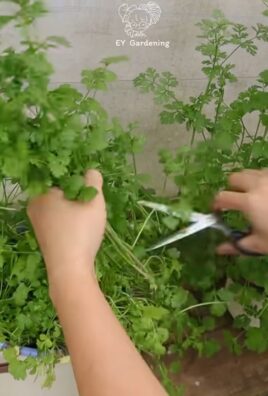
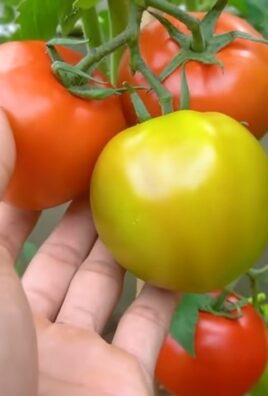
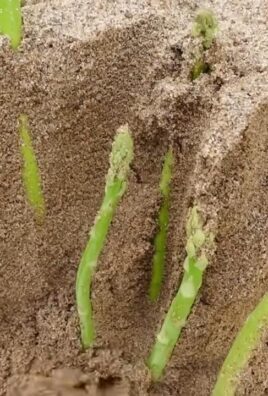
Leave a Comment